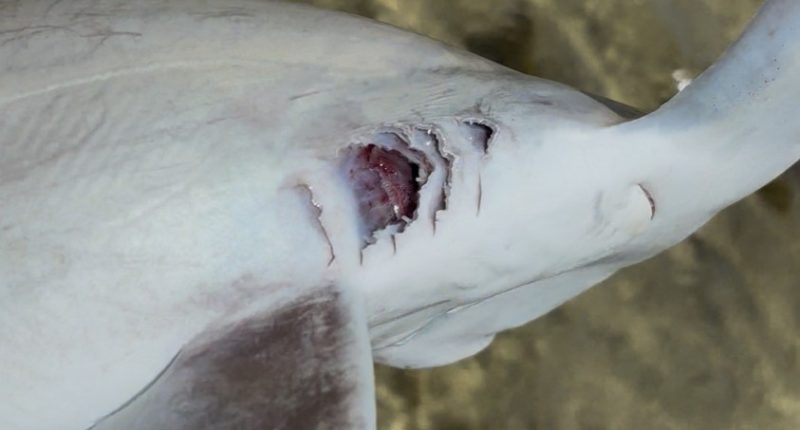Share this @internewscast.com

HONOLULU (KHON2) — A disturbing discovery was made over the weekend at Kuli‘ou‘ou Beach Park in Hawai‘i Kai: at least 11 dead juvenile hammerhead sharks were found washed up along the shoreline, and marine experts believe they may have been intentionally killed.
“All the same size, belly up I didn’t know what to think,” said Robert Clegg, a UH Mānoa oceanography student who came across the lifeless sharks around noon on Sunday.
Clegg quickly notified the Department of Land and Natural Resources and also reached out to KHON2 to raise awareness.
Some of the sharks showed signs of trauma, including cut gills, stab marks, and hook wounds. While a few had no visible injuries, marine biologists say the evidence points toward fishing interactions, not natural causes.
“There are many reasons why you’d see this kind of mortality in juvenile hammerheads,” said Aaron Judah, a UH marine biologist graduate who studied sharks. “But some of the marks suggest gillnetting or other human activity.”
Dr. Andrew Rossiter, director of the Waikīkī Aquarium, reviewed the footage of the sharks and said, “There’s several hook marks in several of them, some of them the gills have been cut, stab marks in some of them, so I think it’s a fisherman who’s caught lots of them and instead of catch and release has decided to just kill them for whatever reason.”
Under Hawai‘i law, it is illegal to knowingly capture, entangle, or kill a shark. A bill passed in 2021, Act 51 (House Bill 553), which made shark fishing a misdemeanor offense with penalties up to $10,000 per offense.
DLNR urges fishers to:
- Avoid known shark pupping areas
- Use barbless circle hooks
- Release sharks as quickly and safely as possible
“They’re pretty resilient,” Rossiter said. “If you accidentally hook one, you can usually release it and it will survive.” He suggests using pliers.
“Whoever did this is both doing something illegal and something pretty heartless,” he added.
If you see suspicious fishing activity or harmed marine life, report it to DLNR’s Division of Conservation and Resources Enforcement via their DLNRTip app.












